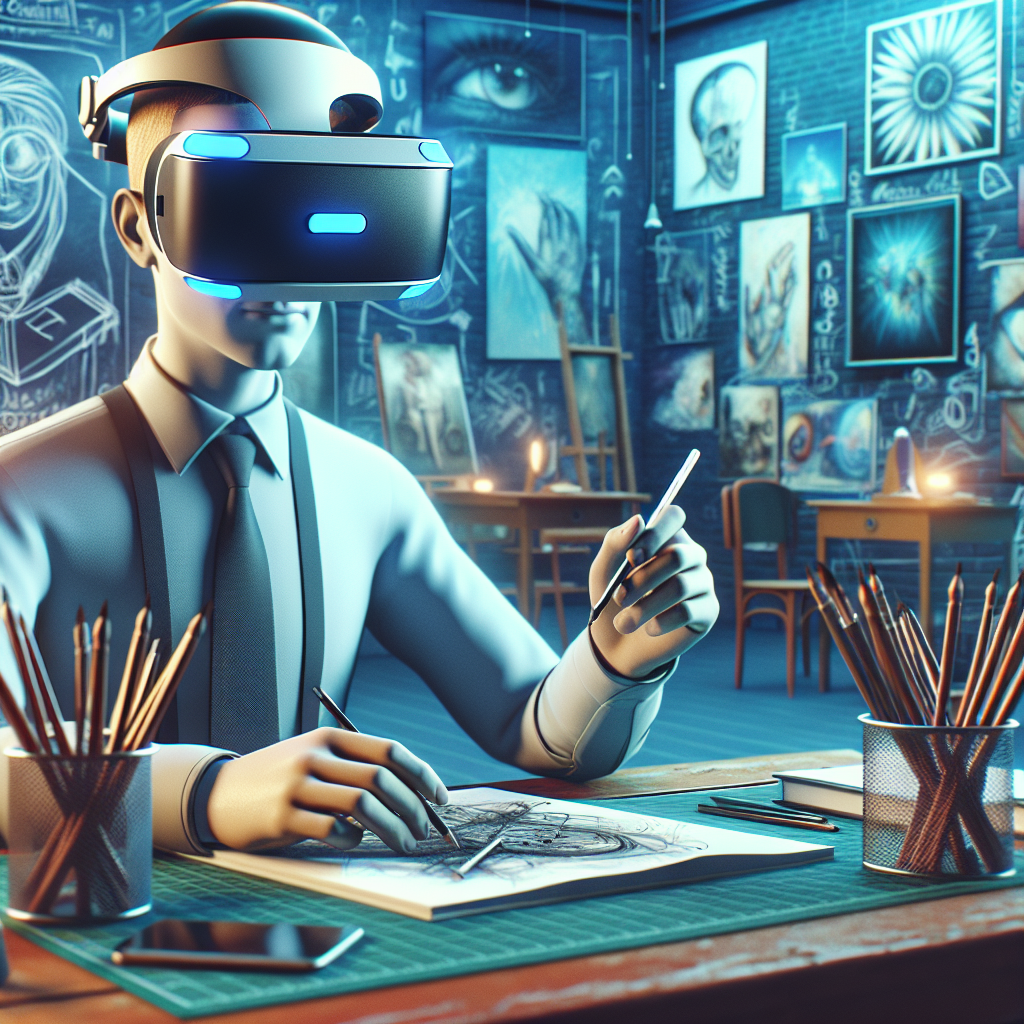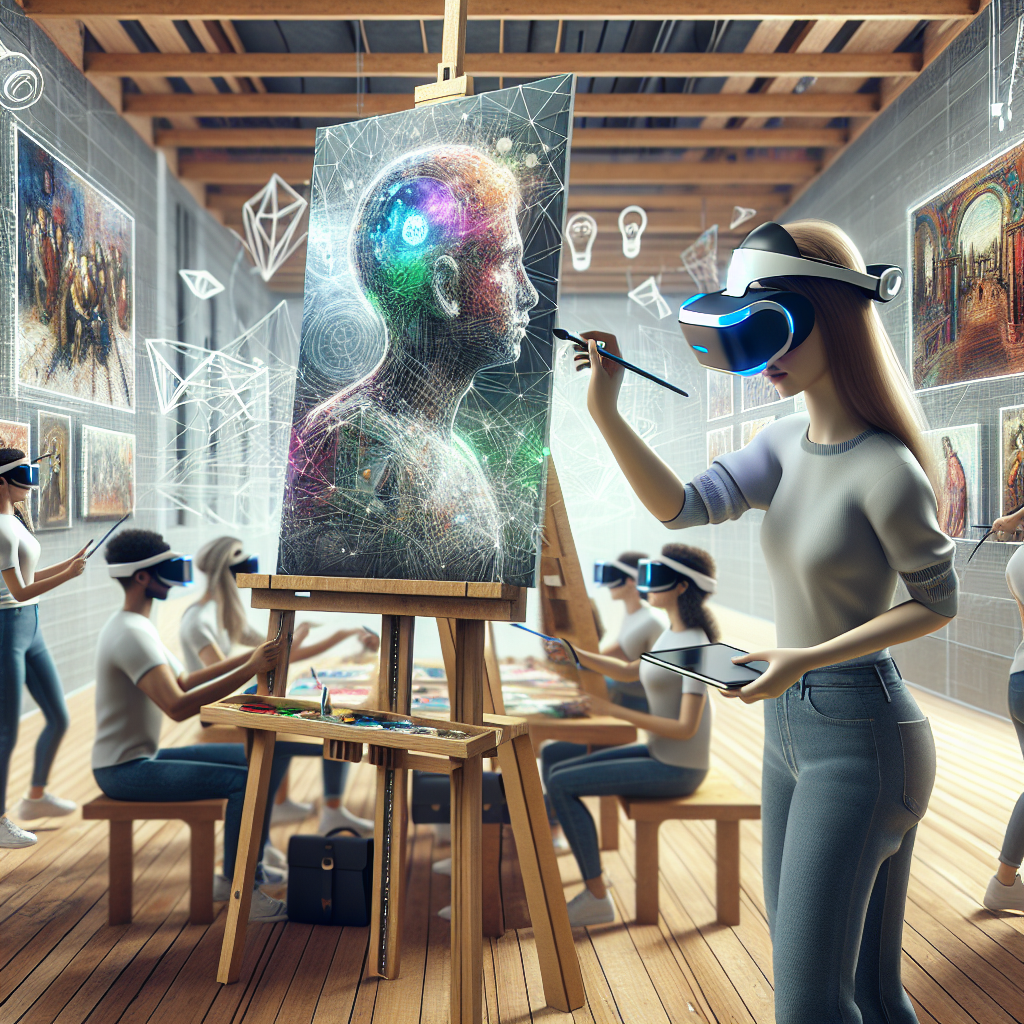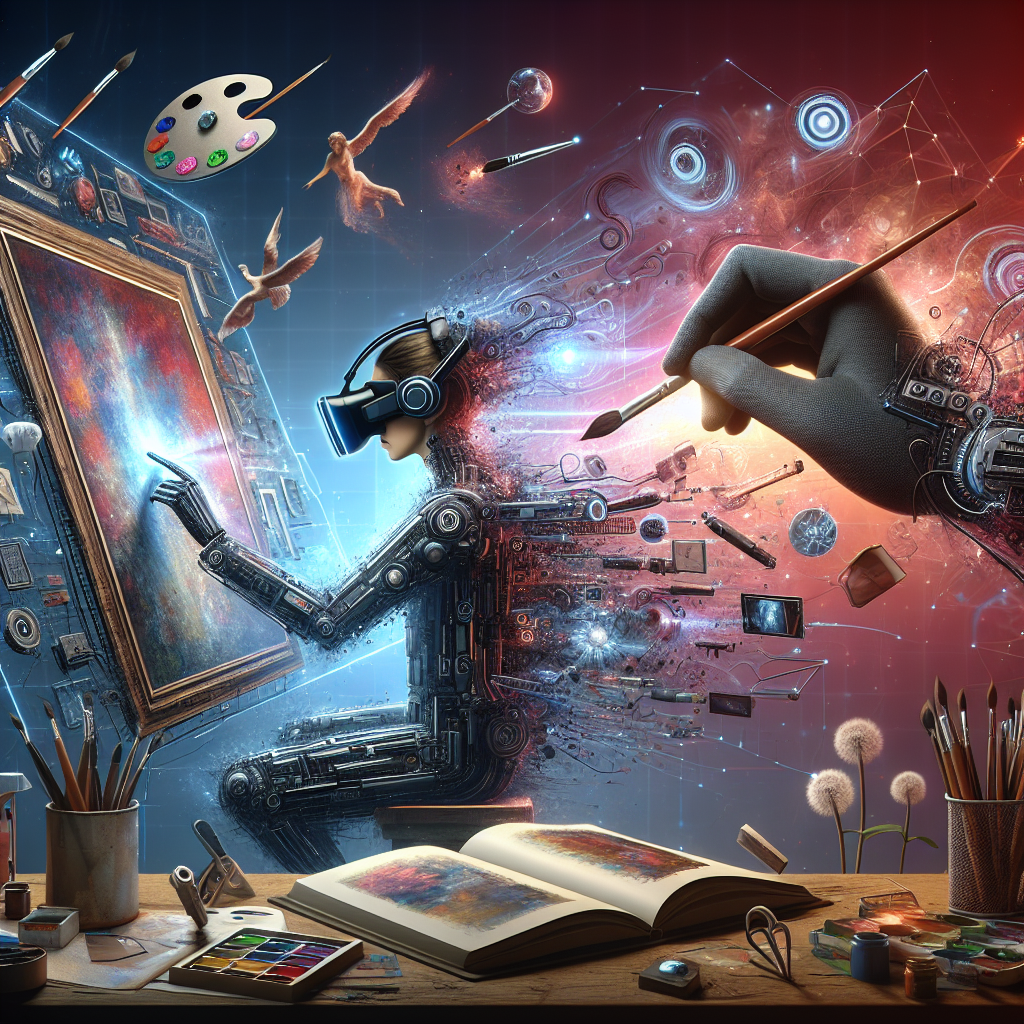
In the realm of education, technological advancements have continually revolutionized the way we perceive and interact with knowledge. One notable area where these advancements have made a profound impact is in the field of art education. The integration of virtual reality (VR) and augmented reality (AR) technologies has opened up a Pandora's box of possibilities, transforming traditional art education into an immersive and dynamic experience like never before.
The incorporation of VR and AR technologies in art education has not only enhanced the learning experience but has also democratized access to art resources. Students can now explore museums, galleries, and artworks from around the world without leaving their classrooms. This level of accessibility has broken down geographical barriers and provided a more inclusive learning environment for students of all backgrounds. Furthermore, the interactive nature of VR and AR technologies allows students to engage with art in a hands-on manner, fostering creativity and critical thinking skills. Through virtual simulations and interactive exercises, learners can experiment with different artistic techniques, styles, and mediums, providing them with a more holistic understanding of art concepts. Moreover, these technologies have also revolutionized the way art is created and showcased. Artists can now use VR and AR tools to conceptualize, design, and present their work in innovative ways, pushing the boundaries of traditional art forms. This fusion of technology and art has given rise to new forms of expression and storytelling, blurring the lines between the physical and digital worlds. In conclusion, the integration of VR and AR technologies in art education represents a paradigm shift in the way we teach, learn, and appreciate art. By harnessing the power of these immersive technologies, educators can inspire creativity, foster collaboration, and cultivate a deeper appreciation for the arts among students of all ages.
The Fusion of Art and Technology

Imagine stepping into a virtual gallery where you can admire masterpieces up close, almost feeling the brushstrokes on your skin. VR technology has made this scenario a reality by bridging the gap between art and audience. Through VR headsets, students can explore art collections from around the world, gaining cultural insights and artistic inspiration without leaving the classroom. This hands-on approach fosters a deeper understanding and appreciation for diverse artistic styles, enhancing the overall learning experience.
Redefining Creativity and Expression

On the other hand, AR has revolutionized the way students create art themselves. By overlaying digital elements onto the physical world, AR apps allow learners to experiment with different mediums, styles, and techniques in real-time. This interactive process not only encourages creativity but also enables students to visualize their ideas in a three-dimensional space, breaking free from the constraints of traditional two-dimensional canvases. As a result, art education becomes more inclusive and accessible to individuals with varying skill levels and backgrounds.
Immersive Learning Experiences

Incorporating VR and AR technologies into art education transcends the traditional boundaries of the classroom, offering students a multisensory and interactive learning environment. Whether exploring famous landmarks in VR or collaborating on virtual art installations in AR, these immersive experiences engage students on a deeper level, sparking their curiosity and fueling their passion for art. By combining digital tools with traditional teaching methods, educators can tailor lessons to individual learning styles and provide personalized guidance to enhance student creativity and critical thinking skills.
Bridging Gaps and Fostering Collaboration
The integration of VR and AR technologies also has the potential to bridge geographical and cultural gaps in art education. Students from different parts of the world can collaborate on virtual projects, exchange ideas, and explore diverse art forms, promoting global awareness and cultural exchange. These collaborative experiences not only enrich students' understanding of art but also cultivate empathy, tolerance, and respect for different perspectives, fostering a sense of unity and belonging in an increasingly interconnected world.
Looking Ahead
As we navigate the digital age, the role of VR and AR in art education will continue to evolve and expand. By harnessing the power of these technologies, educators can unlock endless possibilities for creativity, expression, and collaboration, shaping a future where art education transcends physical boundaries and empowers students to become global citizens of the digital era.
In conclusion, the integration of virtual and augmented reality technologies in art education marks a paradigm shift in how we perceive, learn, and create art. By embracing these transformative tools, educators can ignite a passion for art, foster creativity, and cultivate a deeper appreciation for cultural diversity among students. As we embark on this journey of exploration and innovation, let us embrace the unseen and embark on a path towards a brighter, more immersive future for art education.
Comments